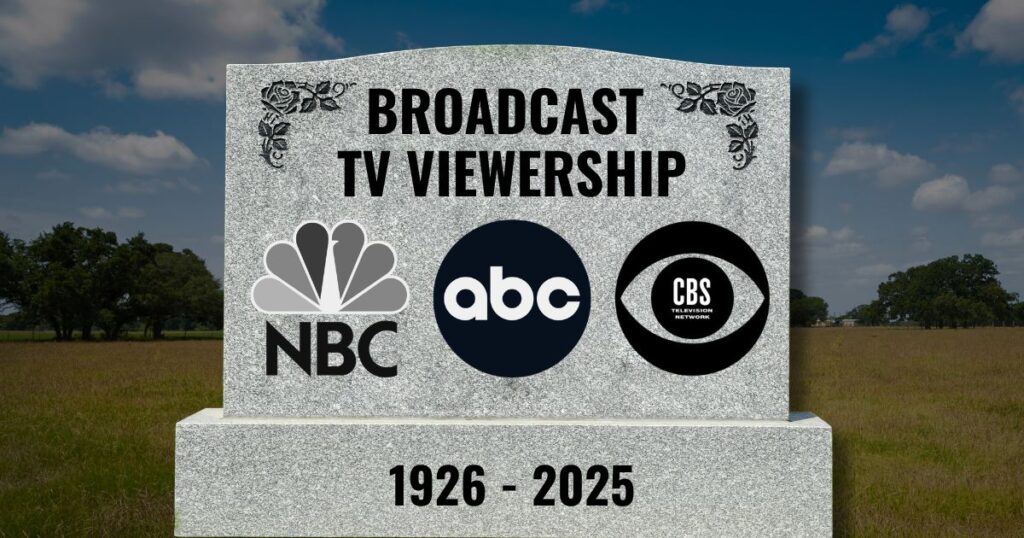The steady decline in traditional broadcast television shows no signs of slowing down as recent Nielsen data shows a continuous decline in audiences across key networks. For the past five years, the once dominant prime time lineup of ABC, CBS, NBC, and Fox has struggled to maintain their audience, especially within the younger demographics.
Factors such as cord cutting and increased competition with cable networks have long influenced broadcast ratings, but deeper changes have emerged from the rapid rise in digital platforms such as streaming services and YouTube. This confusion has changed the way and where audiences consume content and what is considered “must-see” programming.
Impact on YouTube viewing habits
Since 2019, YouTube has been the dominant force of entertainment, especially among younger audiences. With billions of hours of content being consumed every day, YouTube has surpassed traditional television to provide personalized on-demand programming. According to Nielsen’s 2024 gauge report, YouTube currently accounts for the largest share of streaming viewers in the US, surpassing Netflix.
This shift has attracted the majority of under-35 audiences from broadcast television, as viewers increasingly favor creators, influencers and short-form videos in place of scheduled television shows. As a result, major networks witness a double-digit percentage drop in viewers among key advertising demographics each year.
Streaming services fragmented audiences
The surge in subscription-based streaming services such as Netflix, Hulu, Disney+, Peacock and Max has further fragmented the television landscape. Between 2020 and 2025, the number of Americans subscribe to at least one streaming platform has skyrocketed to accounts ranging from around 200 million to over 300 million, many of which are shared among households.
This extensive adoption of streaming has changed the definition of “rating” for television. Viewers are now often watching since the original broadcast date, program days, and even weeks. This means that traditional overnight Nielsen ratings do not reflect the actual popularity or cultural relevance of the show. Streaming platforms frequently release all seasons at once, encouraging radical viewing habits that bypass traditional pre-ordered viewing.

Advertising Dollar Follows Audiences
Ad revenues are following as viewers move to YouTube and streaming services. Broadcast networks struggle to compete with the precise targeting and performance analytics offered by digital platforms. YouTube is expected to generate more than $40 billion in advertising revenue worldwide by 2025, according to Insider Intelligence.
This financial shift has often forced broadcasters to adapt, either by launching their own streaming platforms (such as Paramount+ or NBC’s Peacock) or by mimicking live events online. Nevertheless, these efforts have not yet completely suppressed the level of engagement seen in the early 2000s or reacquired.
The Future of Broadcasting: Live Events and Niche Viewers
Experts suggest that the future of broadcast television could rely on live programming such as sports, award shows, breaking news and more. However, even these categories are increasingly invaded by streaming platforms with exclusive sports rights and real-time coverage options.
In summary, the past five years have marked a turning point in the media landscape. Traditional broadcast television, once a centerpiece for American Home Entertainment, is now one of many options that are gaining attention in the digital-first world. As younger viewers grow into an era defined by Tiktok trends and YouTube Vlogs, the networking issues aren’t just ways to get back.


